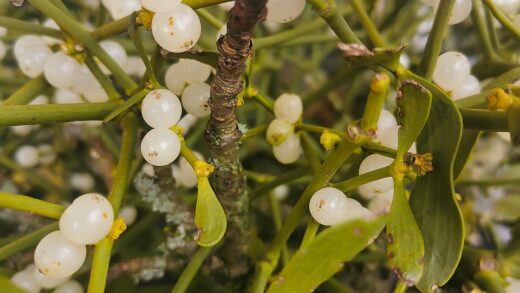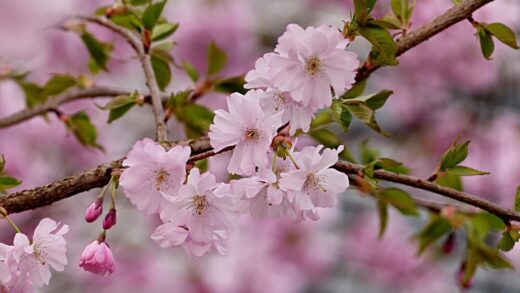Understanding the water requirements of the silk acacia is fundamental to its successful cultivation, as its needs evolve dramatically from a young, developing sapling into a mature, established tree. In its native environment, it has adapted to survive periods of drought, developing physiological traits that allow it to conserve moisture effectively. This inherent resilience is a key characteristic, but it does not imply that the tree is immune to the effects of water stress, especially when planted outside its natural habitat. Proper irrigation practices are therefore a balancing act between providing sufficient moisture for optimal growth and respecting its natural predisposition for well-drained, less-than-saturated conditions.
For a newly planted silk acacia, water is the single most critical element for survival and establishment. During the first one or two growing seasons, the tree’s primary focus is on extending its root system deep and wide into the surrounding soil. This process requires a consistent supply of moisture to fuel cell expansion and growth. Insufficient water during this formative period will result in a stunted, weak tree with a shallow root system, making it highly vulnerable to future droughts and instability. Therefore, a diligent and thoughtful irrigation plan is non-negotiable for young trees.
As the silk acacia matures, its relationship with water changes. A fully established tree, with a root system that may penetrate several meters into the ground, becomes remarkably self-sufficient and drought-tolerant. It can access deep soil moisture reserves that are unavailable to shallower-rooted plants, allowing it to thrive through typical summer dry spells with little to no supplemental watering. This makes it an excellent choice for water-wise landscapes, provided it was properly cared for during its youth. The challenge for the gardener then shifts from frequent watering to recognizing the rare occasions of extreme drought when intervention is necessary.
Ultimately, mastering the irrigation of a silk acacia involves observation and understanding rather than a rigid schedule. Factors such as soil type, local climate, rainfall, and the age of the tree all influence its thirst. Learning to read the subtle cues of the tree—the turgidity of its leaves, the color of its foliage, and the moisture level of the soil—is the key to providing water when it is needed most. This responsive approach prevents both the stress of dehydration and the far more dangerous risk of root rot from overwatering, ensuring the tree remains a healthy and vibrant presence in the garden.
The water physiology of the silk acacia
The silk acacia possesses several fascinating adaptations that contribute to its drought tolerance. Its bipinnately compound leaves, composed of many tiny leaflets, are a key feature. This structure creates a large surface area for photosynthesis but also for potential water loss through transpiration. To counteract this, the leaflets have the remarkable ability of nyctinasty, meaning they fold up at night. More importantly, they will also fold up during the day in response to heat and water stress, a clever mechanism that reduces the surface area exposed to the sun and drying winds, thereby conserving precious moisture within the plant.
More articles on this topic
The tree’s root system is another critical component of its water management strategy. The silk acacia develops a deep taproot, accompanied by an extensive network of lateral roots. This architecture allows it to anchor itself firmly and, more importantly, to explore a large volume of soil for water and nutrients. While many landscape plants are reliant on moisture in the top few feet of soil, a mature silk acacia can draw water from much deeper reserves, effectively insulating it from short-term surface dryness. This is why deep, infrequent watering during establishment is so important—it trains the roots to grow downwards from the very beginning.
From a cellular perspective, the tree is adapted to handle periods of reduced water availability. Like many plants from seasonally dry climates, it can adjust the osmotic potential within its cells, allowing it to continue drawing water from soil that might be too dry for other species. However, there are limits to this adaptation. During prolonged drought, if the soil water potential drops too low, the tree will enter a state of stress. It may sacrifice parts of itself, such as older leaves or even entire branches, to reduce its overall water demand and ensure the survival of its core structure.
It is also important to recognize that while the tree is drought-tolerant, it is not a true desert plant. It performs best and flowers most prolifically when it has access to at least moderate moisture during its active growing season. Its drought tolerance should be viewed as a survival mechanism, not its preferred state. A well-hydrated tree will have a fuller canopy, more vibrant foliage, and a significantly more impressive floral display. Therefore, the goal of irrigation is not just to keep the tree alive, but to provide the resources it needs to truly flourish.
Irrigation for newly established trees
The first two years in the ground are the most critical period for a silk acacia’s water needs. During this establishment phase, the tree is entirely dependent on the gardener to provide the moisture required to build a robust root system. The frequency and volume of watering will depend on the soil type and weather conditions. In a well-draining loam during a typical summer, a deep watering once a week is often a good starting point. For sandy soils that drain very quickly, it may be necessary to water every four to five days, while heavier clay soils may only need water every ten days.
More articles on this topic
The key to effective watering for a young tree is to apply the water deeply. A light sprinkling on the surface does little good, as it only moistens the top few inches of soil and encourages the development of a shallow, weak root system. The goal is to deliver enough water to moisten the entire root ball and the surrounding soil to a depth of at least a foot. A simple way to achieve this is to let a hose trickle slowly at the base of the tree for an extended period, allowing the water to soak in gradually rather than running off the surface.
Monitoring the soil moisture is more reliable than adhering to a strict calendar schedule. Before watering, it is advisable to check the soil moisture a few inches below the surface. A simple finger test is often sufficient; if the soil feels dry at that depth, it is time to water. Various tools, such as soil moisture meters, can also provide a more quantitative assessment. Over time, one will develop an intuitive sense of when the tree needs water based on the season, recent rainfall, and the appearance of the tree itself.
It is also crucial to avoid the common mistake of overwatering. While consistent moisture is needed, constantly saturated soil is the silk acacia’s greatest enemy. Waterlogged conditions deprive the roots of oxygen, leading to suffocation and creating an ideal environment for pathogenic fungi that cause root rot. The soil should be allowed to dry out slightly between waterings. This cycle of moist-to-slightly-dry is essential for healthy root function and development, ensuring the young tree gets the best possible start in its new environment.
Watering mature and established specimens
Once a silk acacia has been in the ground for two to three years and is showing signs of vigorous growth, it can be considered established. At this point, its water requirements decrease dramatically, and supplemental irrigation should be significantly reduced. For much of the year in many climates, a mature tree will be perfectly content with natural rainfall. Its extensive root system allows it to find the moisture it needs, making it a low-maintenance and water-wise choice for the garden. Constant, unnecessary watering of a mature tree can do more harm than good.
The need for supplemental watering for a mature tree is limited to periods of extreme and prolonged drought. The definition of a drought will vary by region, but generally, if there has been no significant rainfall for four to six weeks during the hot summer months, the tree will benefit from a deep irrigation session. Signs that an established tree is experiencing severe water stress include widespread wilting that does not recover in the cooler evening hours, a dull or grayish cast to the foliage, and premature leaf drop, particularly from the inner parts of the canopy.
When it becomes necessary to water a mature tree, the principle of deep, infrequent application still holds true. The goal is to replenish the moisture reserves deep in the soil profile. The water should be applied around the tree’s drip line, not at the trunk. The drip line is where the fine, absorptive roots are most concentrated. A soaker hose arranged in a large circle around the drip line is an excellent method for delivering water slowly and efficiently over several hours, ensuring deep penetration and minimal waste.
It is important to remember that a mature silk acacia’s tolerance for drought does not mean it is impervious to poor water management. Even an established tree can be killed by overwatering, such as from a poorly aimed lawn sprinkler system that constantly wets the area around its trunk. Saturated soil conditions around a mature tree can lead to the same root rot issues that affect young trees. Therefore, irrigation systems should always be positioned to avoid consistently soaking the root zone of the silk acacia.
Recognizing and correcting water-related problems
Identifying the symptoms of underwatering is relatively straightforward. The most obvious sign is wilting, where the leaves and young stems lose their turgidity and droop. The fern-like leaves may also fold up during the day as a protective measure. If the dehydration persists, the edges of the leaflets will turn brown and dry, and the tree may begin to shed leaves to reduce its water consumption. In a flowering tree, a lack of water can cause buds to drop before they open or can lead to a very short and disappointing bloom period. The correction is simple: provide a long, deep drink of water as soon as the problem is noticed.
Overwatering, while often stemming from good intentions, is a far more insidious and dangerous problem for a silk acacia. The initial symptoms can be subtle and are often mistaken for other issues. One of the most common signs is chlorosis, or the yellowing of leaves, which occurs because the waterlogged roots are unable to take up essential nutrients like iron and nitrogen. The tree may exhibit stunted growth, and new leaves may be small and pale. In advanced stages, the roots begin to rot, the bark at the base of the trunk may become soft or discolored, and the entire tree will show a rapid decline.
Correcting an overwatering problem requires immediate action. First, all supplemental irrigation must be stopped. It is essential to allow the soil to dry out as much as possible. If the tree is planted in heavy, poorly draining clay, improving the soil structure may be necessary, though this is difficult for an established tree. Aerating the soil around the root zone by poking deep holes with a garden fork can help introduce oxygen to the roots. If root rot is suspected, a soil-applied fungicide may be considered, but often the damage is too extensive for the tree to recover.
The best long-term solution to water-related problems is prevention. This starts with selecting a site with excellent drainage from the very beginning. Amending heavy soils before planting is crucial. For established trees, applying a layer of organic mulch is highly beneficial. Mulch helps to conserve soil moisture, reducing the need for watering during dry periods. At the same time, it prevents the soil surface from crusting over, which improves water infiltration and aeration, helping to mitigate the risks associated with occasional heavy rains.


















